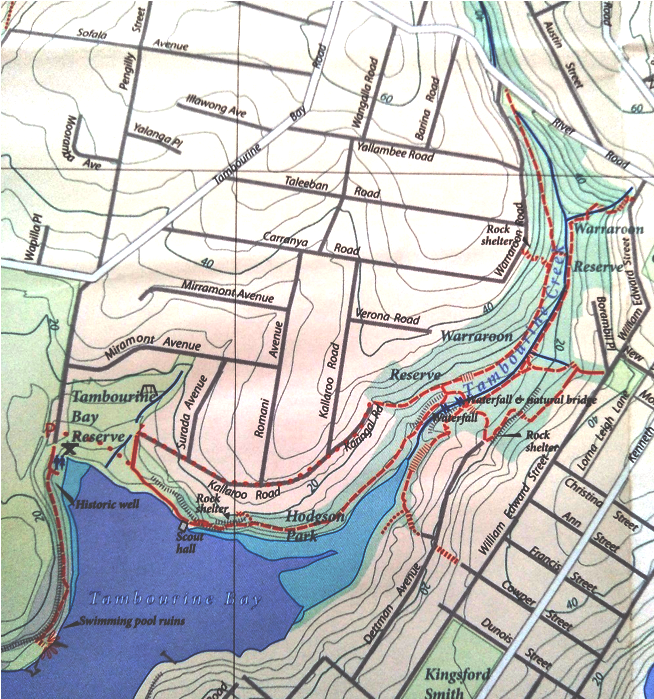Entrance: Corner of Warraroon Road and River Road West or William Edward Street near the corner of River Road West.
Grade: Medium/easy bush tracks with steps and tree roots to negotiate.
Distance: 3km return.

The walk through Warraroon Reserve bushland and along Tambourine Bay’s shoreline is most interesting as Warraroon contains the greatest diversity of species in Lane Cove, with both ecologically endangered communities and endangered wildlife. You will see tall tree species, rainforest vegetation along the creek, wetland communities alive with frogs and a tidal mangrove wetland where the creek empties into Tambourine Bay. Ibis, Egrets and Spoonbills are often seen here wading in the mangroves.

There are spectacular rock formations sculpted by water and wind, sandstone cliffs and a natural rock bridge over a small waterfall in the creek. The wetland-mangrove area and sections of the creek are silted up from excavation for urbanisation, restricting the mouth’s tidal flow. However, grant -funded restoration projects are gradually assisting remediation.

Continue walking around the foreshore from Tambourine Bay Park where historic, man-made structures can be seen. There is a fresh water well cut into the sandstone bed of a creek in the early days of settlement of the north shore and the sandstone ruins of the Riverview College change rooms where the college’s original salt water pool was constructed in Tambourine Bay.
Wonga Vine – Pandoea Pandorana in the Warraroon Reserve
The endangered Powerful Owl and Grey-headed Flying Fox inhabit the Reserve. Small native Finches, Wrens and Whip-birds may be seen among the acacias, ferns and wildflowers. In summer, the beautiful pink Crowea or pink Hyacinth Orchids flower. The reserve’s endangered ecological communities include Coastal Escarpment Littoral Rainforest and Sydney Turpentine Ironbark Forest edge.

Crowea in Warraroon Reserve – S Forrest 
Superb fairywrens inhabit Warraroon Reserve bushland 
Sandstone steps in Warraroon Reserve. S Forrest.
The latest details can be found on our Facebook page.
